Begin a long distance exploration of Spain with a traditional Spanish Omelet, or Tortilla Española. It all starts with eggs, potatoes, and olive oil. In time you’ll have a lovely flat omelet, much like a frittata, prepared on the stovetop and finished in the oven. Perfect for breakfast, dinner or cut into small pieces as an appetizer.
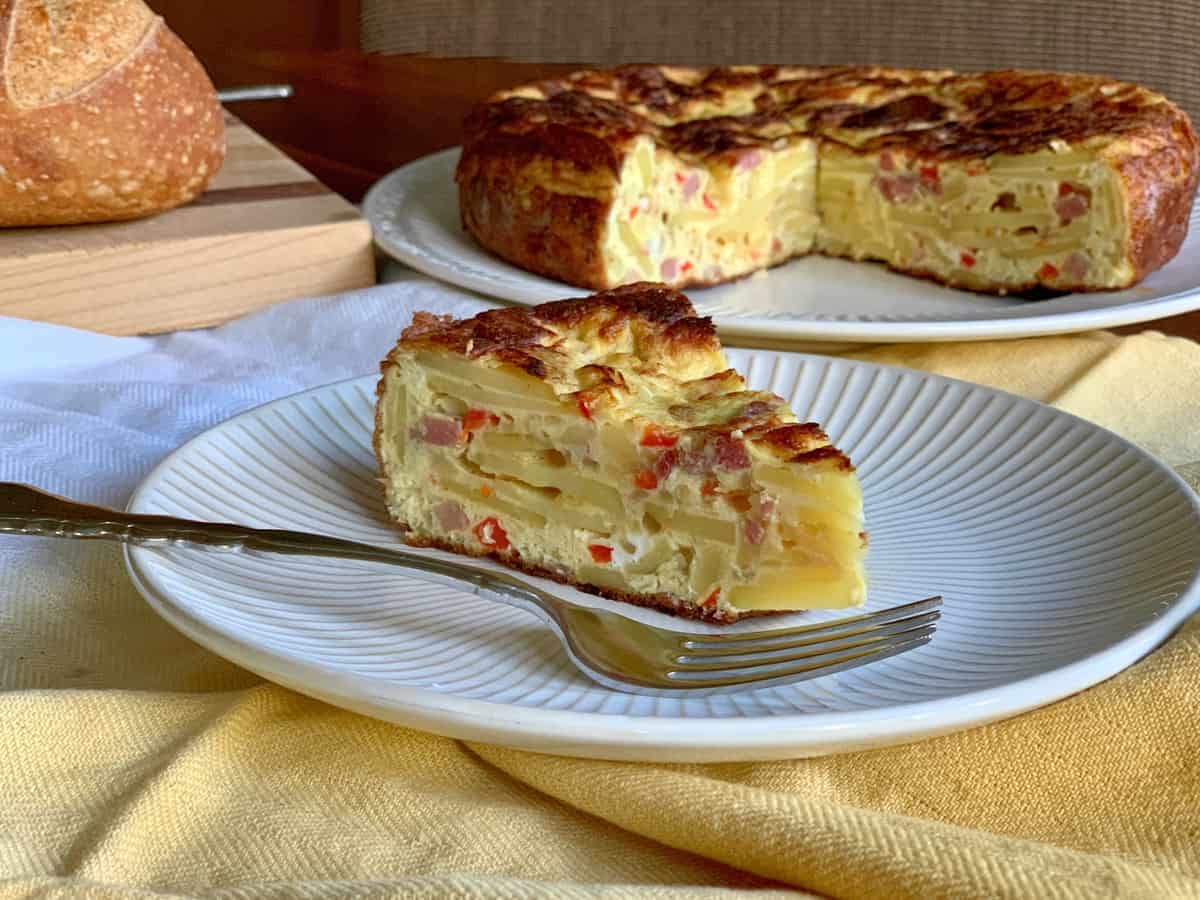
Travel Season
For residents of the Pacific Northwest this is a great time of the year to travel. Here it is, mid-May, and while places far and wide are basking in the beauty of spring and the anticipation of summer, here it is still cloudy and cool. Those same gray days of February and March are lingering deep into May with only the slightest hint of sunshine.
The plants are ready. The trees are tipped in fresh spring green. Flowers are in bloom. The colors, however, remain muted by the damp gray cloud cover. Tender shoots push out on rich green pine and cedar branches then seem to shiver in the spring air, wondering why they have been called out so soon.
The forecast for this week is, finally, hot and sunny. There are rumors that the temperatures will soar into the 90s by the weekend. I have been holding onto that hope since early last week, when a heat wave was predicted to hit just after Mother’s Day. We are now into mid-week and still waiting.
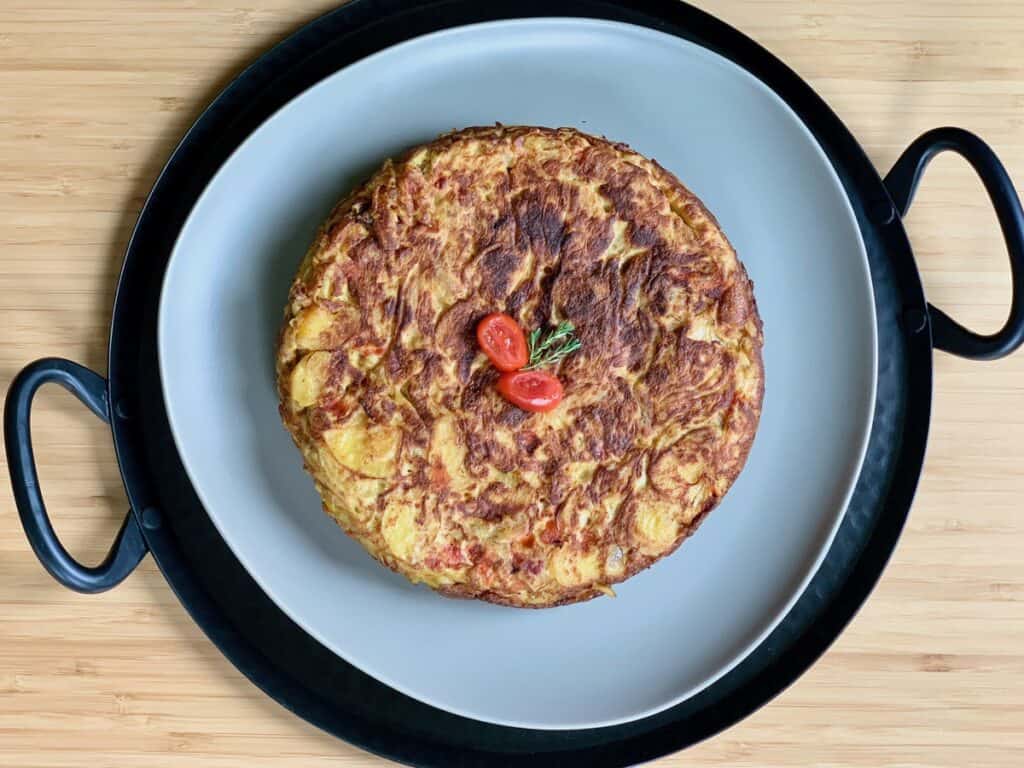
Seeking Sunshine
So, while the clouds stubbornly refuse to break, I am seeking sunshine in the privacy of my own kitchen. I have a new cookbook, Spain and the World Table, from the Culinary Institute of America. This seems like the perfect time to explore the taste of sunshine inherent in Spanish cuisine.
When I think of Spain I think of hot dry summers, welcome shade, refreshing beverages and tapas. This impression was etched in my mind one glorious summer in my youth. That year I had the opportunity to study in Spain. I have had a special place in my heart for the language, the cuisine and the weather ever since. For that reason, I was excited to receive this cookbook and try some of its recipes.
Spain and the World Table comes from DK publishing, you know, the source of those great Eyewitness Travel Guidebooks. I almost never take a vacation without using one to help plan my trip. I love the detailed drawings and maps as well as the wonderful photographs. If the books don’t grab you with their text they will make you want to be there with their photos and diagrams.
The Inspiration of Spanish Cuisine
Spain and the World Table has some of the same great illustrative qualities but in a different format. Here I learn about the Spanish pantry, its regional influence on the country’s ever evolving cuisine. In its pages I can picture the Mediterranean Coast, imagine the sun and sea air, as I read about dishes rich in fish and seafood. In the recipes that rely on olive oil and figs, I feel the hot arid winds of Andalucia. I taste the delight of new discovery as I read about recipes that rely heavily on new world ingredients not even seen in Spain until after the voyage of Columbus. I can even find the exotic influence of the ancient Moors who made their mark on Spanish cuisine over 1000 years ago.
This book is not so much about the basics as it is about inspiration. It brings the origins and influences of regionalized Spanish cuisine to today’s table. It is about making food traditions relevant and interesting to a modern kitchen and lifestyle.
My first impression is that the book is, well, big. Most of the layouts feature a gorgeous food photo on one page and its recipe on the page opposite. There are lots of interesting Spanish inspired flavor combinations. Cocao nib, fig, and bleu cheese. Saffron and potatoes. Vanilla, pork and tempranillo wine.
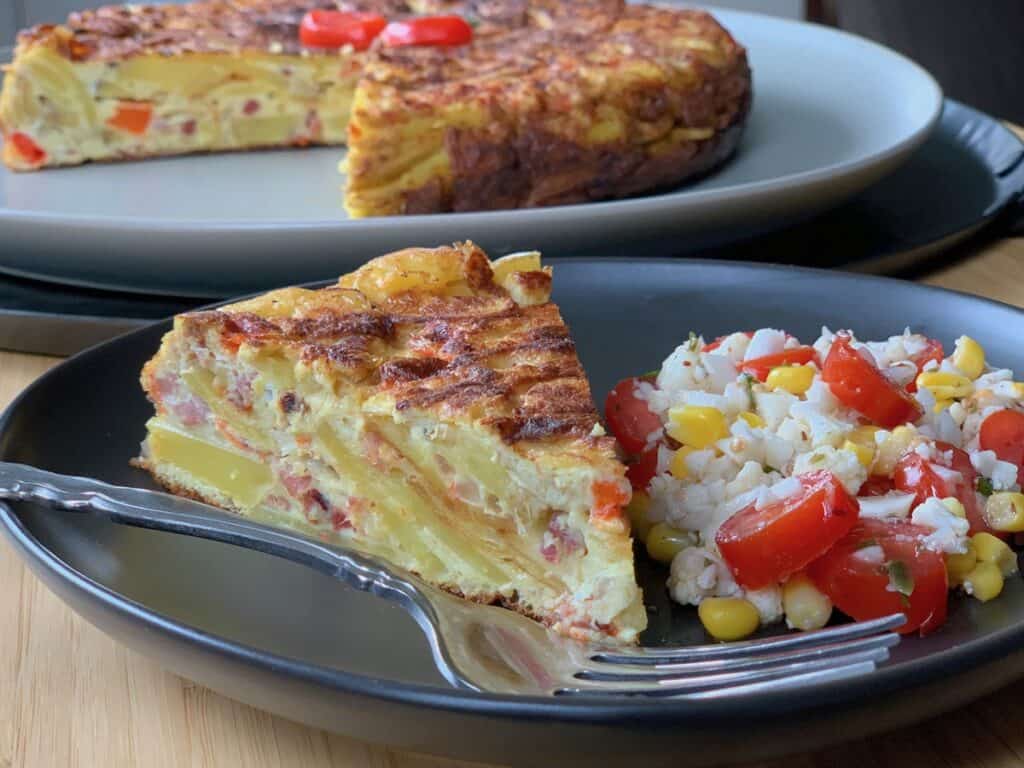
A Classic Spanish Omelet
Some recipes in the book require extra equipment that may be hard to find in the average kitchen. Some call for techniques a typical home chef may not have mastered. Still others call for ingredients that can be hard to find or are prohibitively expensive. Even so, these recipes are interesting and inspiring.
Gladly, there are more recipes that rely on classic ingredients that are easy to obtain. Cold Almond and Garlic Soup (or White Gazpacho), for example, is made from day old bread, almonds, garlic and salt. Patatas Panaderas calls for only potatoes, olive oil, garlic, salt and herbs. In all cases the information is fascinating and the presentation is gorgeous.
After thumbing through the book I decided to begin my long distance exploration of Spain with a personal favorite. I opened the book to a recipe for Tortilla Española, a traditional Spanish Potato Omelet. I remember this dish fondly from my first taste of it at a tapas bar in Madrid. It was there that I first saw wine drunk from a traditional Catalonian vessel called a porron, a sort of a glass bota or wineskin, between bites of this delicious potato and egg dish. I’ve been to the grocery to collect the ingredients. I am hoping that this combination of armchair traveling and kitchen alchemy will result in a sense of copious sunshine by late afternoon.
Tortilla Española (Spanish Omelet)
Course: Breakfast, AppetizersCuisine: SpanishDifficulty: Easy8
servings10
minutes30
minutes40
minutesThis traditional Spanish Omelet, much like a frittata, is prepared on the stovetop and finished in the oven. Perfect for breakfast, dinner or cut into small pieces as an appetizer.
Ingredients
9 Yukon Gold potatoes (about 2 pounds) peeled and sliced 1/8 inch thick
1 3/4 teaspoon salt, divided
1/2 cup plus 2 tablespoons extra virgin olive oil, divided
1 cup chopped yellow onions
1/3 cup chopped red bell pepper
1/3 cup chopped green bell pepper
1/2 cup diced chorizo sausage
1 cup diced Serrano ham
10 large eggs
Directions
- Beat eggs and 3/4 teaspoon salt in a large bowl until smooth. Set aside.
- Toss sliced potatoes with 1 teaspoon of salt. Heat 1/2 cup olive oil in a large non-stick or well seasoned frying pan. Add potatoes and cook, stirring occasionally, until the potatoes begin to soften (approximately 5 minutes).
- Add the onions, peppers, sausage and ham. Continue to cook, stirring occasionally, until potatoes are tender, another 5-10 minutes).
- Drain the potato mixture and add it to the eggs. Stir until well combined.
- Clean the frying pan then return it to medium heat. Add 2 tablespoons of olive oil. When the oil is quite hot add the potato mixture, smoothing it evenly in the pan.
- Reduce heat to low. Cook the egg mixture, gently shaking the pan occasionally to prevent sticking, until the mixture is set (approximately 8 minutes).
- Remove pan from heat. Cover the omelet with a large plate ( a flat pan lid or omelet turner be used instead) then flip the pan, inverting the omelet onto the plate. Slide the omelet back into the pan to cook the other side until lightly browned (approximately 5 minutes).
- Transfer the omelet to a serving plate. Cut into wedges or squares. Serve hot or at room temperature.
Notes
- Recipe Source: Spain and the World Table from the Culinary Institute of America.
- I could not find Serrano ham at any local markets. In this case I substituted prosciutto.
- To my taste, the amount of salt can be reduced by about half.
- Like any omelet, this dish is very generous in allowing for variations on the ingredients added to the basic mixture of eggs and potatoes. Either ham or sausage or neither might be added. Likewise, the mixture of vegetables can easily vary according to what is on hand.

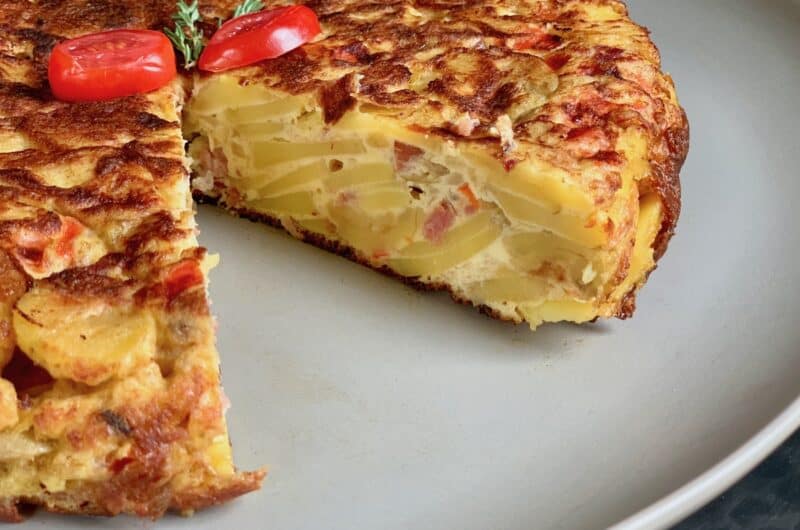

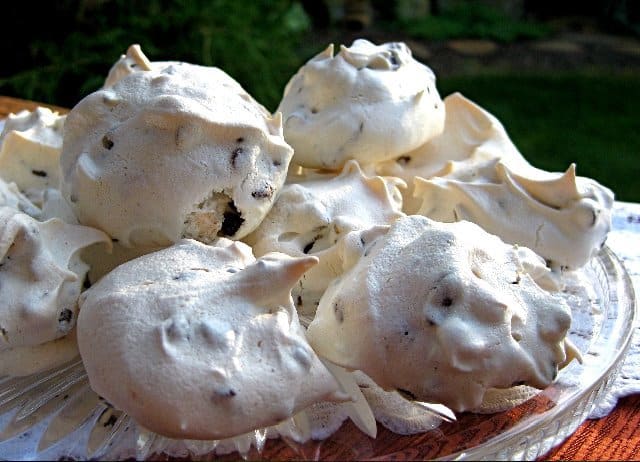




I’m so glad you stopped by!
It seems the weather forecast was right after all, just a bit ahead of itself. Now that the weather has turned bright and sunny, Enjoy!
I happened across you blog recently, and I’m really enjoying it! I’m in Seattle, so I definitely feel your pain when it comes to weather woes.